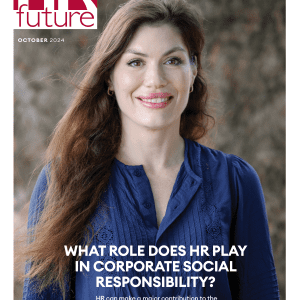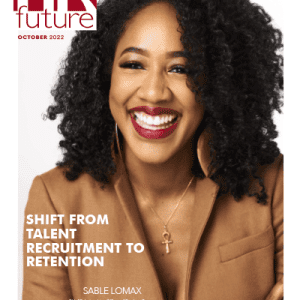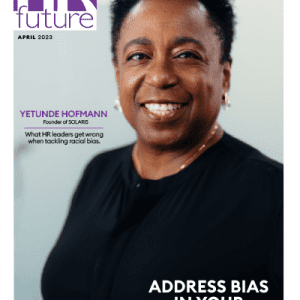In today’s world, sustainability is no longer just a “nice to have” — it has become a core strategic imperative. For HR leaders, this shift presents both challenges and opportunities. It means rethinking how the organization attracts, retains, and develops talent; how to signal purpose; and how to equip the workforce for new expectations around environment, social, and governance (ESG). Smart HR teams are already weaving sustainability into the employer value proposition and using it as a differentiator in a competitive talent market.
One company that exemplifies this kind of forward-thinking is re:sustain — a firm that builds a digital twin / building optimisation platform to reduce energy consumption and carbon emissions in real estate portfolios. Their technology—combining modeling, automation, and real-time energy intelligence—shows how environmental goals can be addressed through scalable, data-driven interventions according to https://resustain.com/.
Here’s how HR teams can learn from and leverage such sustainability innovation as part of a broader people strategy.
1. Sustainability as a Core Employer Brand Pillar
- Purpose draws people. Today’s candidates—particularly millennials and Gen Z—are motivated by values and impact. In fact, studies show that over 70% of younger jobseekers consider a company’s sustainability record before accepting an offer. When an organization demonstrates credible commitment to sustainability, it can stand out in a crowded hiring market.
- Transparency builds trust. Just as re:sustain creates a single source of truth for building energy data, HR can do the same with people and culture initiatives. Share sustainability metrics openly: publish annual carbon reduction goals, outline progress, and own up to setbacks. Candidates and employees alike value honesty over greenwashing.
- Storytelling matters. Beyond metrics, people connect with stories. HR can work with sustainability or operations teams to highlight specific initiatives—such as a facility whose energy use was cut by 25%, saving costs and emissions. Showcasing real impact reinforces the authenticity of your employer brand.
2. Upskilling & Culture Shift: Sustainability as a Capability
- Education and awareness. To embed sustainability, the workforce needs fluency in key concepts—carbon, energy efficiency, circular economy, resource intensity. Offer regular training (in person or e-learning) so that people across roles (including HR, marketing, operations) can speak intelligently about sustainability in their work.
- Cross-functional collaboration. Sustainability isn’t just for facilities or engineering teams. HR, finance, operations, procurement—everyone has a role. HR can facilitate cross-team working groups or “green champions” networks that bring together interested employees from different functions.
- Incentives and recognition. Recognise and reward behaviors that contribute to sustainability: energy-saving ideas, waste reduction initiatives, reuse/recycle proposals. Incorporate sustainability criteria into performance reviews or bonus frameworks within your CRM and systems, where feasible.
- Everyday culture shifts. Small but visible actions matter too: defaulting to virtual meetings to reduce travel, promoting cycle-to-work schemes, or even simple reminders about energy-saving practices. HR can help normalize these behaviors through internal campaigns.
3. Talent Pipeline: Attracting & Retaining Sustainability-Minded Professionals
Targeted recruitment. Companies investing in fields such as energy modeling, ESG reporting, or digital optimisation need talent with specific expertise. HR can build dedicated recruitment campaigns highlighting these opportunities, positioning the business as a destination for sustainability professionals.
Graduate and intern programs. Early-career hires are often passionate about environmental issues. Offering structured sustainability tracks—such as rotations with operations teams or sustainability-focused projects—can both attract and retain this demographic.
Retention through purpose. Employees increasingly want alignment between their values and their employer’s actions. Demonstrating measurable progress on sustainability not only motivates employees but also reduces attrition. HR can use engagement surveys to assess whether staff feel their company is doing enough.
Employer of choice. Organizations that make sustainability a core value are more likely to be listed on “best places to work” rankings, which can boost both recruitment and brand equity.
4. Change Management & Internal Adoption
Leadership buy-in. Culture shifts only succeed when leaders set the tone. HR must ensure executives are equipped to communicate the “why” behind sustainability and visibly model behaviors—whether that’s supporting green initiatives or prioritizing sustainable procurement.
Pilot, iterate, scale. Re:sustain’s technology works by modeling scenarios, optimizing incrementally, and then scaling across portfolios. HR can adopt the same principle with people initiatives: start small (for instance, piloting a green commuting program in one office), gather data, and scale what works.
Policy integration. HR policies can either hinder or help sustainability. Travel guidelines, flexible working policies, procurement choices, and benefits (such as public transport allowances) all offer opportunities to align with environmental goals. For example, replacing petrol car allowances with EV support sends a clear signal.
Communication and visibility. Change management is also about keeping momentum. HR can run regular updates—town halls, newsletters, or intranet dashboards—to highlight sustainability wins and progress. Celebrating milestones, such as “100 tonnes of CO₂ saved this year,” keeps employees engaged.
5. Risk Mitigation & Future-Proofing the Workforce
Regulatory pressure. Governments worldwide are tightening ESG reporting requirements. This will directly impact HR, from ensuring compliance roles are staffed to preparing employees for new expectations.
Stranded asset risk. Just as re:sustain warns of buildings becoming “stranded assets” if they are not decarbonised, HR faces the risk of roles becoming outdated. Jobs tied to high-carbon operations may shrink, while new ones in green tech, analytics, or ESG oversight will grow. Planning ahead through reskilling is essential.
Global competition for talent. As more companies adopt sustainability as a strategic priority, candidates will benchmark offers against one another. Those lagging risk losing talent to competitors who can prove they are serious about climate action.
Reputation and employee activism. Employees today are vocal. If they feel their employer isn’t doing enough, they may take concerns public, harming reputation. HR must ensure employee voices are heard internally and integrated into sustainability planning.
6. Wellbeing, Engagement, and the Human Factor
Sustainability isn’t just about carbon—it’s about people. HR can link wellbeing programs with environmental initiatives. For example, promoting walking or cycling to work supports both health and emissions goals. Encouraging plant-based options in cafeterias reduces environmental impact while offering healthier choices.
Employees who feel their company is aligned with a bigger purpose report higher levels of engagement, lower burnout, and stronger loyalty. By connecting sustainability with employee wellbeing, HR ensures that environmental goals are not abstract but tied to everyday life.
Conclusion
For HR leaders, sustainability is no longer on the sidelines — it is central to how the company wins talent, retains purpose-driven employees, and stays resilient in a changing environment. By embedding sustainability into employer branding, learning and development, performance systems, and change management, HR can play a pivotal role in ensuring the organization walks the talk.
Drawing inspiration from technology innovators such as re:sustain, which harnesses data, modeling, and automation to materially reduce energy and carbon across real estate portfolios, HR can partner with operations and sustainability teams to scale meaningful, measurable impact.
The message is simple: HR isn’t just about people anymore—it’s about people
Guest writer


























